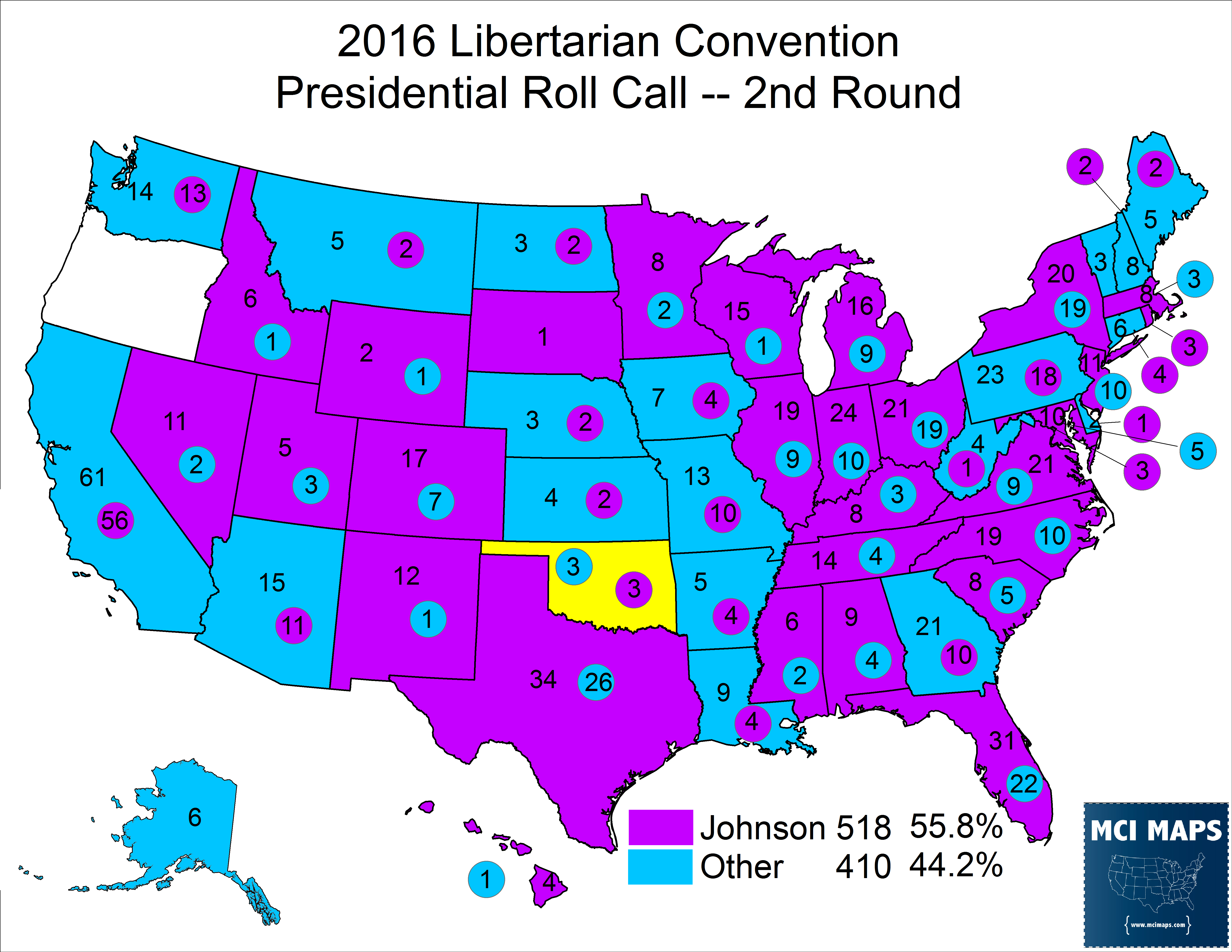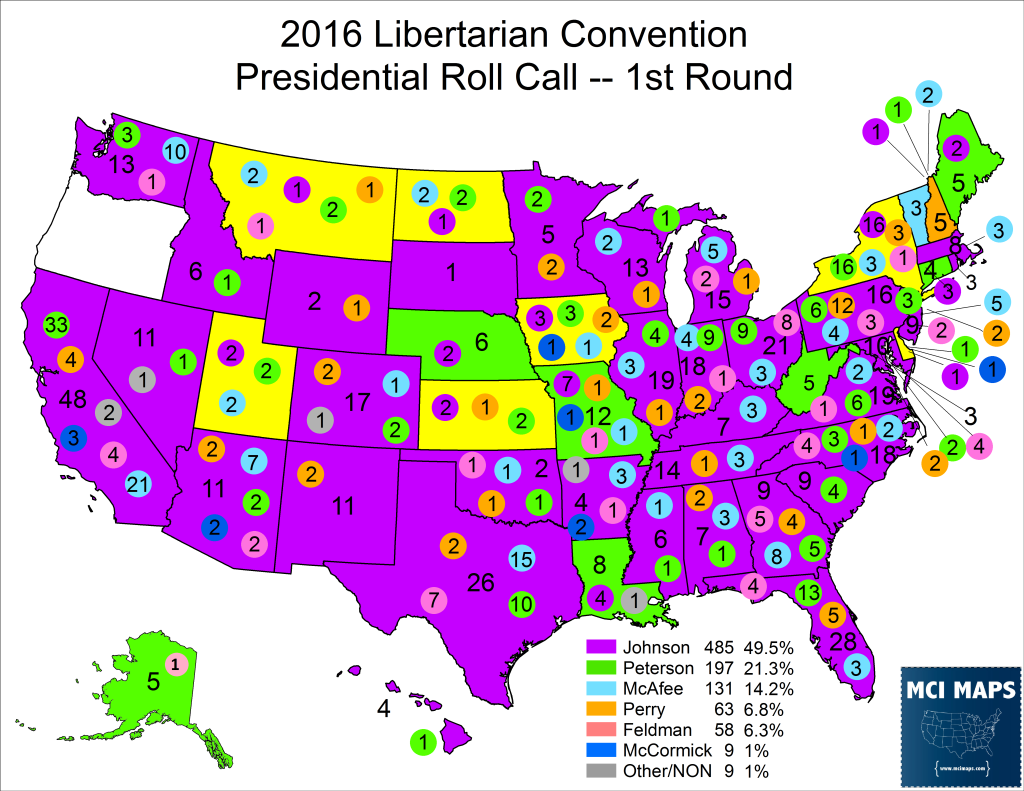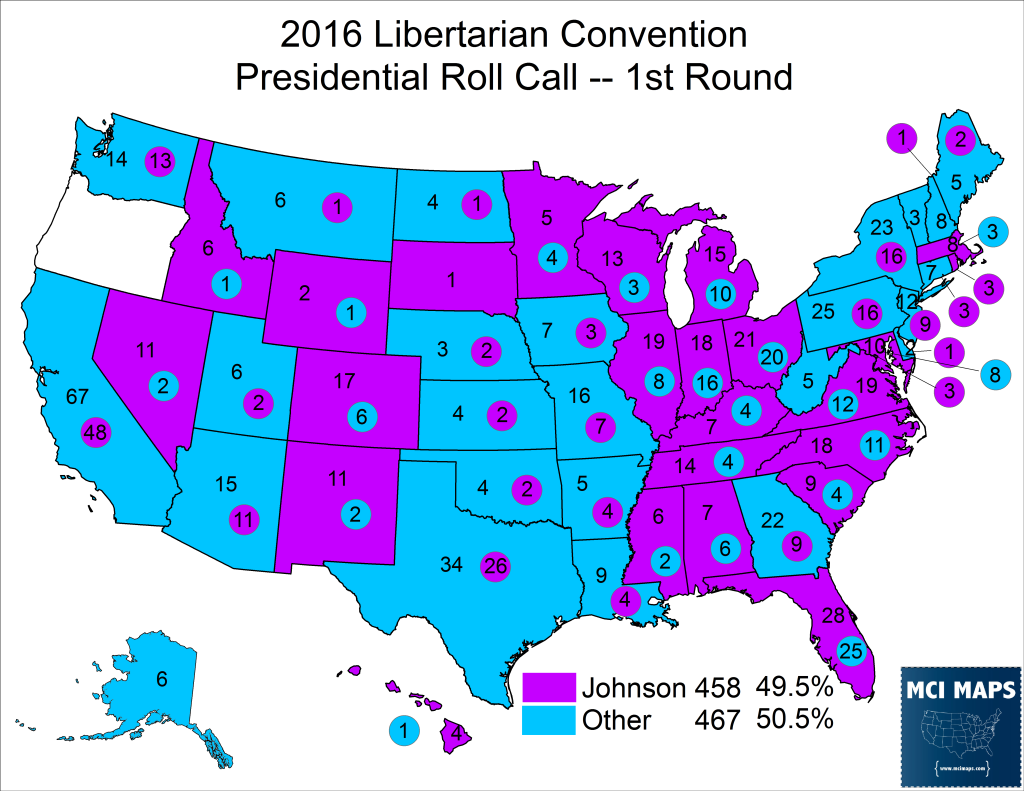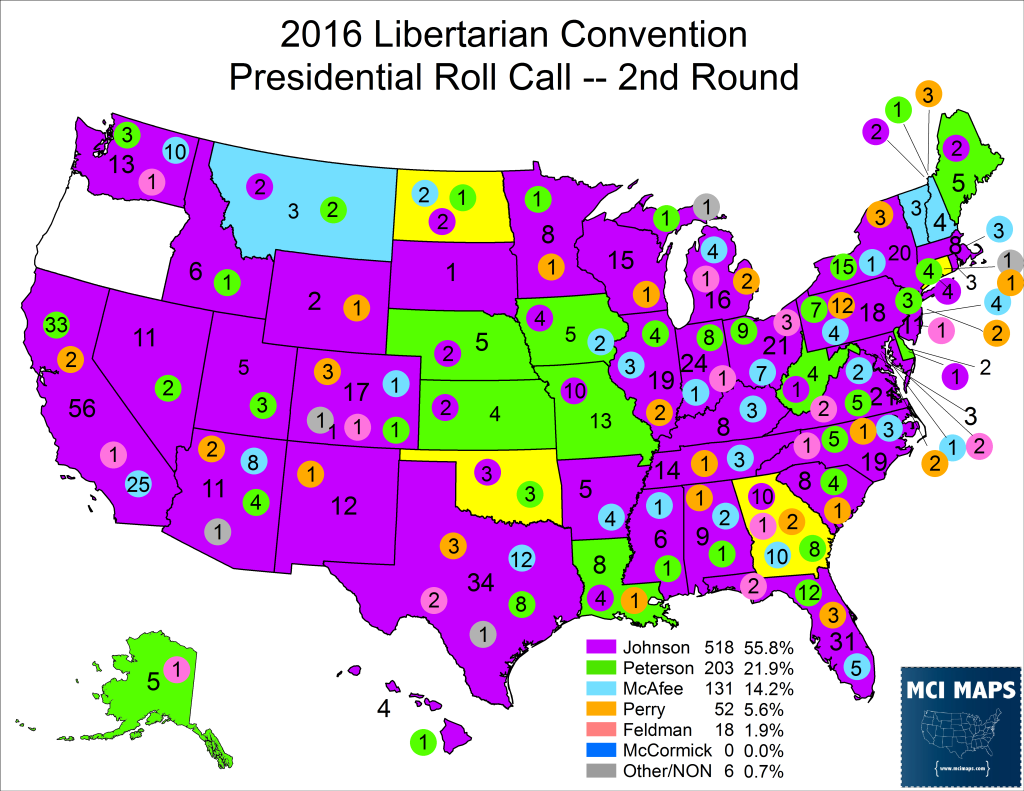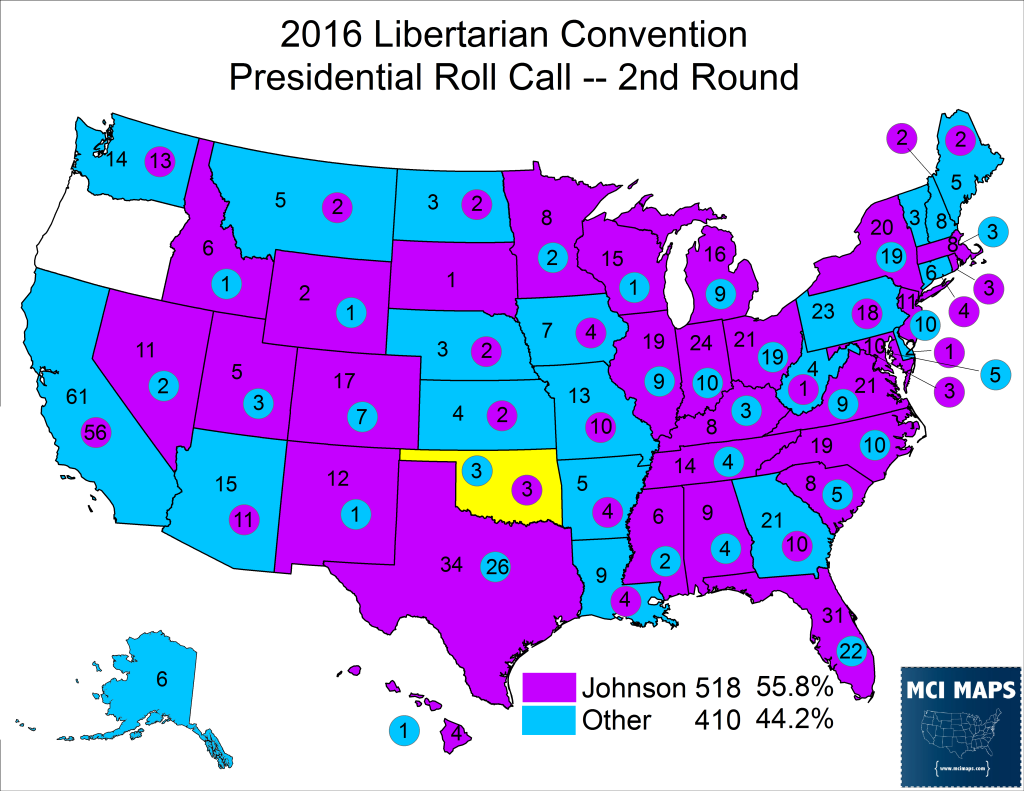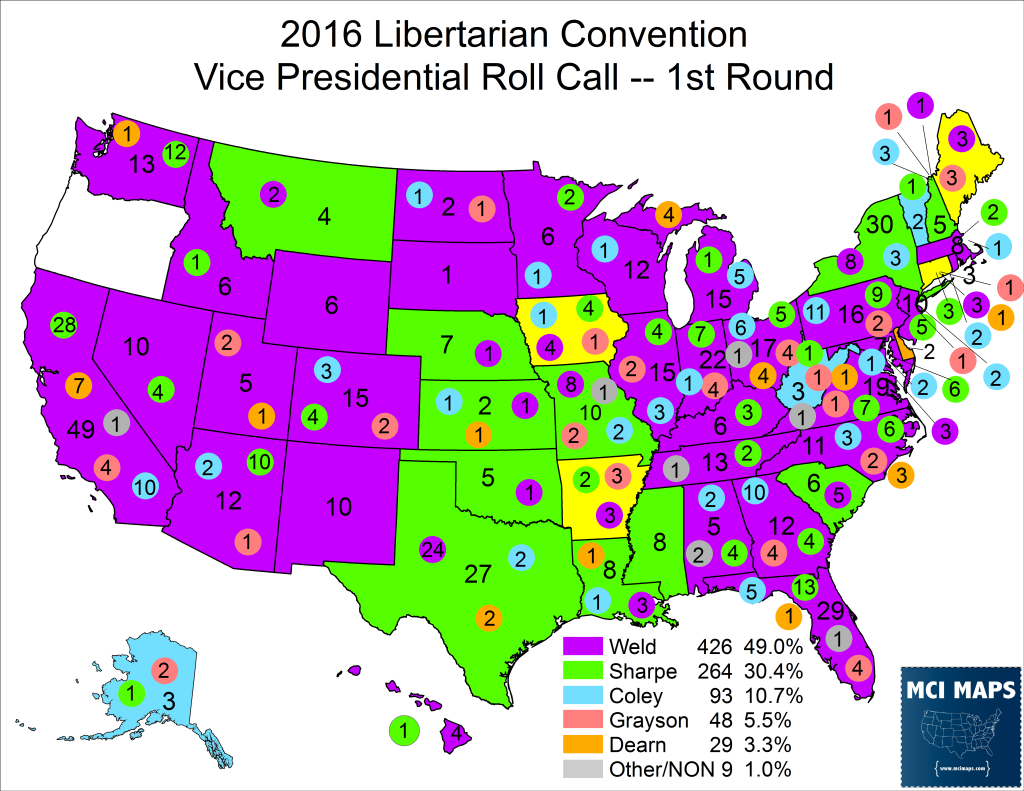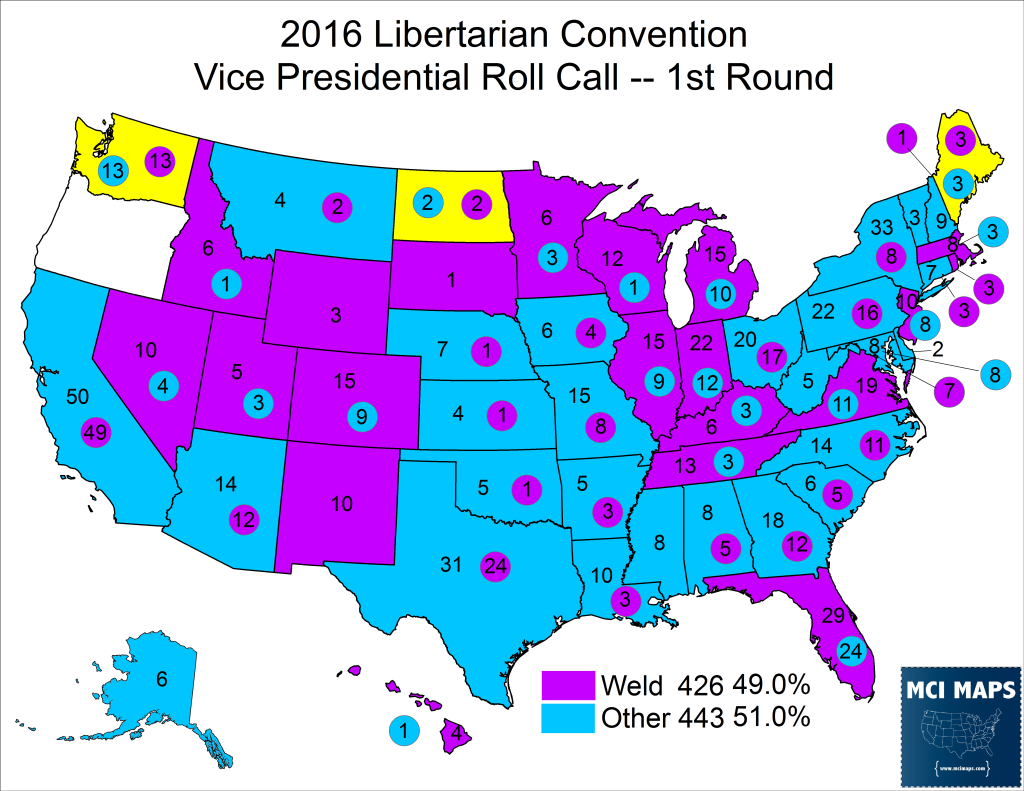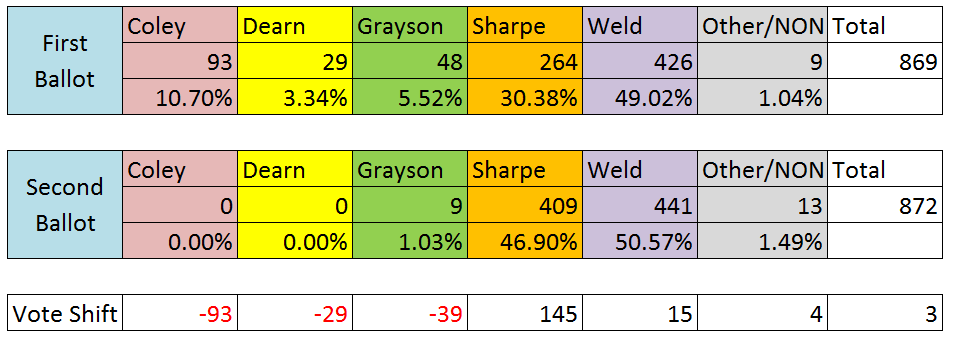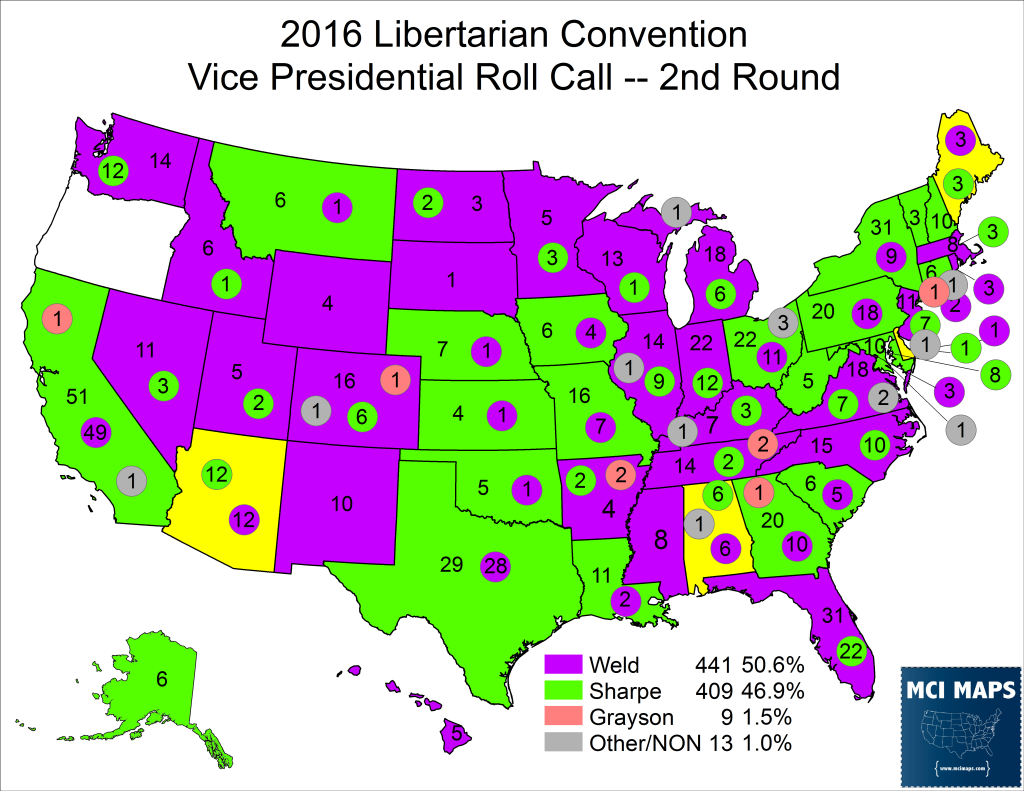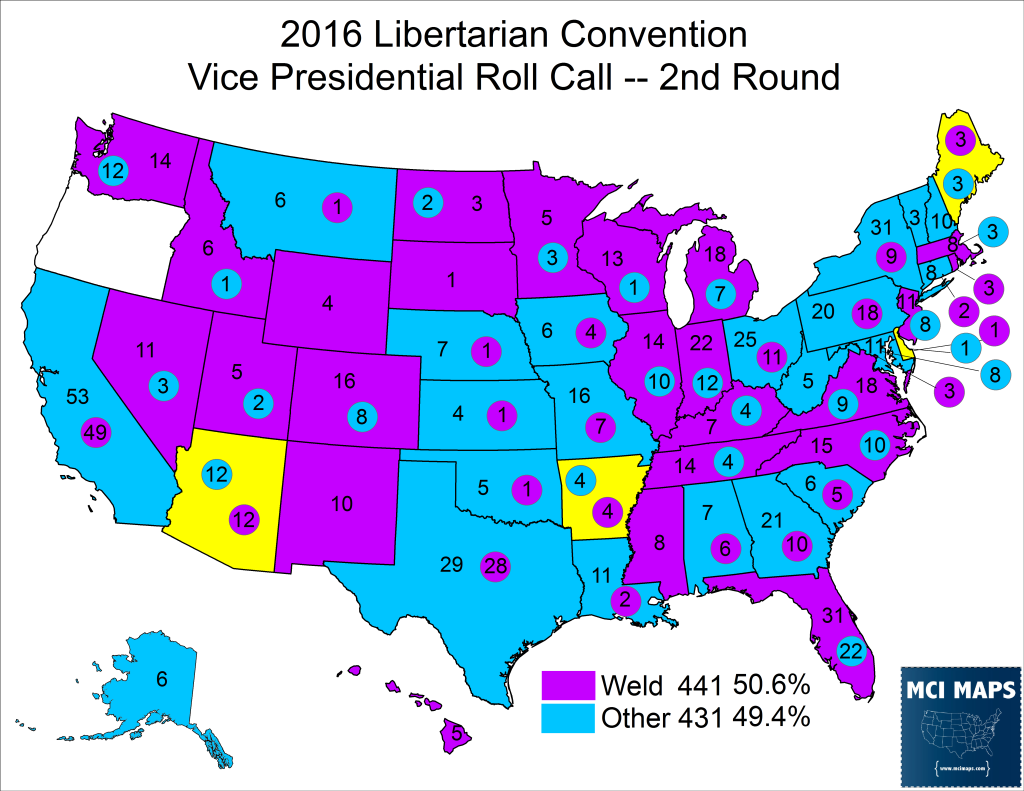This past weekend, the national media and the most hardcore of election junkies turned their attention to Orlando, Florida. The Sunshine State was the site of the 2016 Libertarian Party Convention and a major fight was brewing over who would take the nomination. Normally the inner battles of a third party that didn’t even take 1% in the last election wouldn’t be very interesting. However, with both Trump and Clinton sporting high negatives, the possibility of a third party registering a higher-than-average showing cannot be discounted. For Libertarians, their hopes for relevance lied in Gary Johnson, the former Republican Governor of New Mexico. Johnson, a governor in the 1990s, was a fairly libertarian politician, favoring hands off approach by the government in fiscal and social matters. He ran for the Republican nomination in 2012 but gained little attention before he finally jumped to the Libertarian Party and won their nomination easily. Johnson was opting for the nomination again this time. However, their was a growing sentiment among the delegates about Johnson and whether he was using the party as a platform for himself. Heading into the convention, it was no guarantee who would win.
Issues with Johnson
Libertarian delegates fell largely into two camps, those who saw Johnson as the best way to bring attention to their party, and those who believed in purity and only nominating someone with complete libertarian credentials. It should be stressed that the policies of Johnson definitely put him in the libertarian wing of the GOP and American politics in general. The difference between Johnson and the purists (unofficially referred to as the radical caucus) was over philosophical issues like the Civil Rights Act being constitutional or if drivers licenses were a good idea. Johnson was booed by delegates during the Saturday night debate for supporting both the Civil Rights Act and a requirement for drivers licenses. Issues like Social Security also highlighted divisions, with opponents favoring ending the program and Johnson favoring more of a volunteer system. Issues like gun rights also game up, with Johnson being attacked for favoring baring felons and the mentally ill from buying a gun. Another point of contention was legalizing drugs for people of all ages, with most candidates favor no age limit. The purist wing of the party effectively favors virtually no regulations. Johnson’s support for some regulations put him at odds with the radical caucus. However, other opponents to Johnson weren’t from the radical caucus, but rather from those worried about Johnson actually building the party and being an outsider till recently. Delegates grumbled about 2008 nominee Bob Barr, a former GOP congressman that joined the party promising to build it, then bolting the party to run for congress as a Republican a few years later. Distrust also fueled some Johnson opposition.
Another source of opposition was Johnson’s choice for Vice President, former Massachusetts Governor Bill Weld. Weld also hailed from the libertarian wing of the party, but like Johnson was hardly a purist. The sentiment heading into the convention was that while some might be willing to back Johnson (he had been the nominee four years earlier) they were not ready to back Weld. The concept of two former Republican officials as the ticket worried many convention gathers.
The Presidential Roll Call
The roll call began Sunday morning, starting with the Presidential nominee. Johnson was easily favored to come in first, but he needed 50% to avoid a runoff. Johnson’s strongest opponent was Austen Peterson, a firebrand libertarian that the libertarian blogs, some right wing radio, and the small Christian conservative contingent adored. Peterson had done well during the debate, giving sharp answers and appealing to the purist wing of the party. Another major opponent was John McAfee, famous for creating the anti-virus software.
The goal of the anti-Johnson forces was to keep him under 50% consolidate around an alternative through multiple ballots. On the first ballot, Johnson came painfully close, getting 49.5%. Peterson came in a distant second with 21.3%, McAfee at 14.2%, and assorted other candidates/write-ins further down. Perry represented a firebrand purist wing of the party. Feldman was definitely more of a purist but less know before the convention began. He also had a cordial relationship with Johnson, who had helped make sure Feldman was in the debate.
The map below shows the roll call results. The state is colored in for the candidate who won the most votes in it (yellow is a tie), with other votes showed in colored-in circles. The color key for each candidate is on the bottom.
The roll call vote itself is a mess geographically. Johnson came in first in most states, but under 50% in many of them.
Another way to look at it is Johnson votes versus everything else. The map below shows the roll call color-coded with purple for Johnson, blue for the combination of every other vote.
Johnson was clearly strongest in parts of the Midwest, South, and Mountain West. A majority of the farm region and New England was not for him though on the first ballot. California was one of the last states to announce its results, and it is what actually pushed Johnson under 50% on the first ballot.
With the first ballot, McCormick, who only got 9 votes, was eliminated. If delegations didn’t change, then a 3rd ballot would have been likely. However, allegiances shifted on the second ballot and Johnson got the nomination with 55% of the vote.
Lets look at that vote by Johnson vs everyone else to see where things changed.
Johnson netted 60 additional votes after the first ballot. The Texas and New York delegations gave him a majority of the vote. Johnson made the biggest gains there plus California and Indiana, and smaller gains (between 3 and 1 delegates) in 20 additional states.
The candidate-by-state roll call can also be founder here and below
Feldman saw a major drop in votes and some of his backers may have gone for Johnson. However, some of Johnson’s biggest gains were in New York and California, where few Feldman votes were there to start. In addition, while McAfee had the same number of votes, he did lose delegates in some states and gain elsewhere. Overall its clear many delegates switched allegiances in different states for different reasons. There were reports from the floor about Feldman delegates went to Johnson when it was clear Feldman would likely be eliminated on the 2nd ballot. Word is those delegates were whipped by the Johnson camp. How the candidate totals for the first and second ballot went can be found here.
Peterson’s delegates remained largely static, he lost delegates in 10 states, but no more than 2 a state, and gained no more than 3 delegates in 12 states, leaving most with no change.
In his victory speech, Johnson, clearly nervous, begged the convention to nominate Weld as VP. Johnson argued Weld could bring national media attention and fundraising to the ticket.
The Vice Presidential Ballot
With the Presidential ballot done, it was on to Vice President. If Johnson’s delegates stuck with Weld, then all would go smoothly. However, it was likely many Johnson delegates would not back Weld in favor of someone with deeper ties to the party. The benefit for Weld was none of his opponents were well known. A move had been made to allow former Presidential candidates to run for Vice President, but pro-Johnson forces struck down that down, no doubt fearing Peterson making a play for Vice President. Things became tougher for Weld when Johnson’s opponents backed other candidates for Vice President in their concession speeches. Feldman did back Weld in a bizarre speech where he also chastised some of Weld’s positions.
One positive sign for Weld was that Alicia Dearn, a libertarian activists with Peterson’s backing, opted for pragmatism and semi-endorsed Weld. Dearn argued she felt Johnson deserved a VP he was comfortable with, and invited Weld on stage to pledge he would stick with the party. Weld did just that. Dearn did not go so far as to drop out, but gave a strong indication she would be fine with her backers going to Weld. This move earned her many boos.
Most of the other candidates were purists backed by Johnson’s opponents. One candidate, Larry Sharpe. stood out. Sharpe spent most of his speaking time showing a well-made biographical video about his business and family life and his struggles and rebounds. After the first ballot, Weld came in first, but like Johnson, just under 50%.
Weld got significantly fewer votes than Johnson, but also benefited from 59 fewer ballots being cast for VP than for the second round of President.
The roll call vote is below.
Sharpe had a good deal of support from Texas and the farm states, as well as New York. Weld, like Johnson, won most states, but many with less than a majority of the vote.
The map below shows how Weld did compared to all his opponents combined.
One big difference is that while Johnson won a majority of the southern delegations, Weld did not. Weld did do well in other Johnson-backing states. One thing that prevented a bigger loss was that California saw 16 fewer votes cast on this ballot than in its first Presidential ballot. Weld actually did one delegate better than Johnson had on the first ballot, with the opposition doing 17 votes worse in that state alone. No other state saw such a large drop in votes and so disproportionately against the purist side. Weld got 32 fewer delegates than Johnson had on the Presidential first ballot, but the “other” votes also fell by 24, ensuring Weld wasn’t too far behind Johnson’s first round share.
After the balloting, Dearn was eliminated, and in a speech said she would vote for Weld in the next round. “Traitor” was shouted at her by at least one person. Both Coley and Grayson dropped out and endorsed Sharpe. Grayson, however, dropped out after voting began and his name remained on the second round ballot. Sharpe had momentum but Weld just needed a handful of Dearn supporters to go to him. When the second ballot was done, Weld scored a narrow win with 50.5%. He gained only 15 votes while Sharpe had jumped 145, getting to 46%.
The vote by state is seen below.
Sharpe came close to knocking off Weld with big state delegations, a good deal of farm states, and New England. However, Weld kept Sharpe to 1 point wins in CA and TX.
Most of the vote was for Sharpe or Weld, but the map below shows Weld against the combination of Sharpe/Grayson/Other.
The roll call for both ballots for the VP slate can be found in this link and below.
A few key shifts happened. The entire Mississippi delegation, which had backed Sharpe, flipped to Weld. North Carolina and Texas both saw four additional votes go to Weld, and three additional from Michigan. Sixteen other states saw 1-2 delegates flip to Weld. Three additional votes came out of California, all against Weld. Johnson had made gains in California on the second ballot, but Weld did not, doing 7 votes worse than Johnson in California on their respect second ballots. However, the anti-establishment vote was even lower and overall 15 fewer votes were cast in California than had been on the Presidential ballot. Weld had small drops in a few states between ballots, with the biggest losses being in Ohio and Maryland, where he lost 6 in each. Weld managed to pull the nomination out by 4 votes.
Key vote details by state can be found here It includes votes for Johnson, Weld, their combined opposition, and how the votes for President and Vice President differed. You can also view the google doc here
With the Vice Presidential balloting done, the Libertarian ticket was set with Johnson/Weld. The purist wing was not happy but the ticket is by far the most credible the party has ever put up. If the party manages to do well, pulling in 5% and securing national funding, then those who pushed the ticket will be justified. If the ticket falters, then it will give ammo the purist wing in the future. The saga of the libertarian convention can serve as a reminder that in any political party, the clash between the “establishment” and the “purists” always exists.

